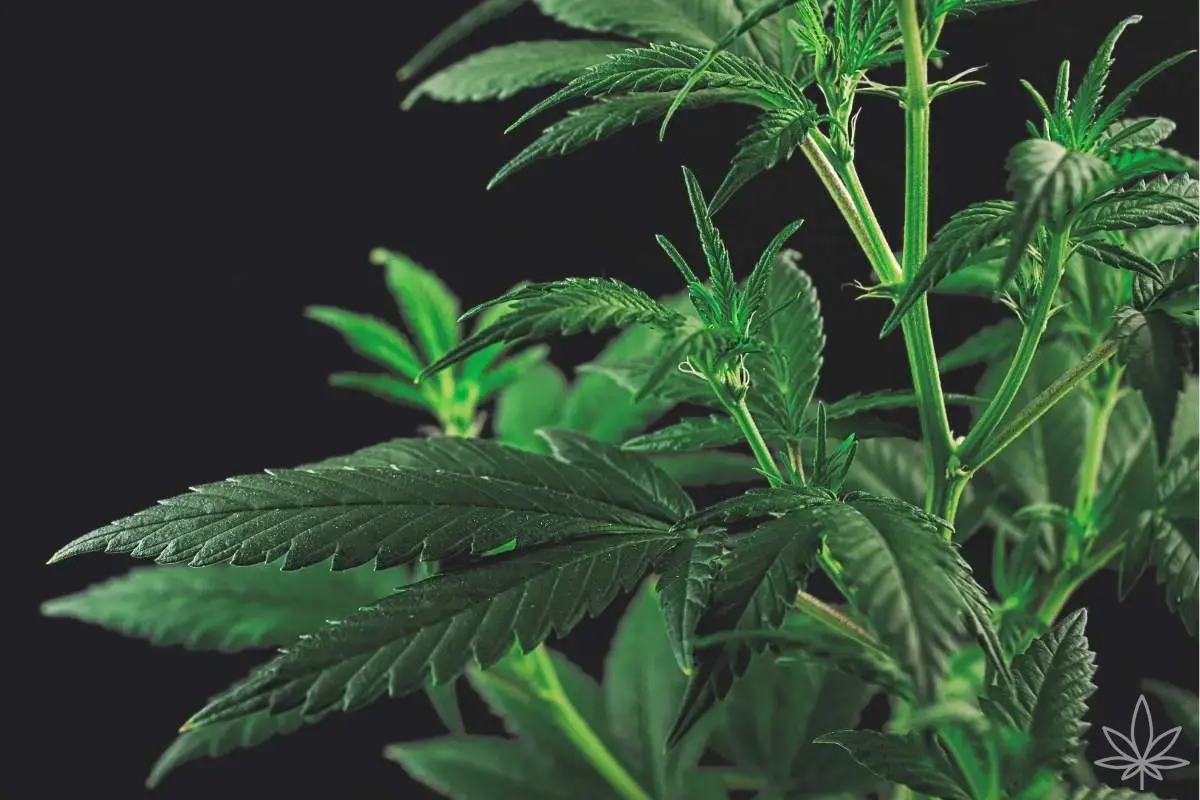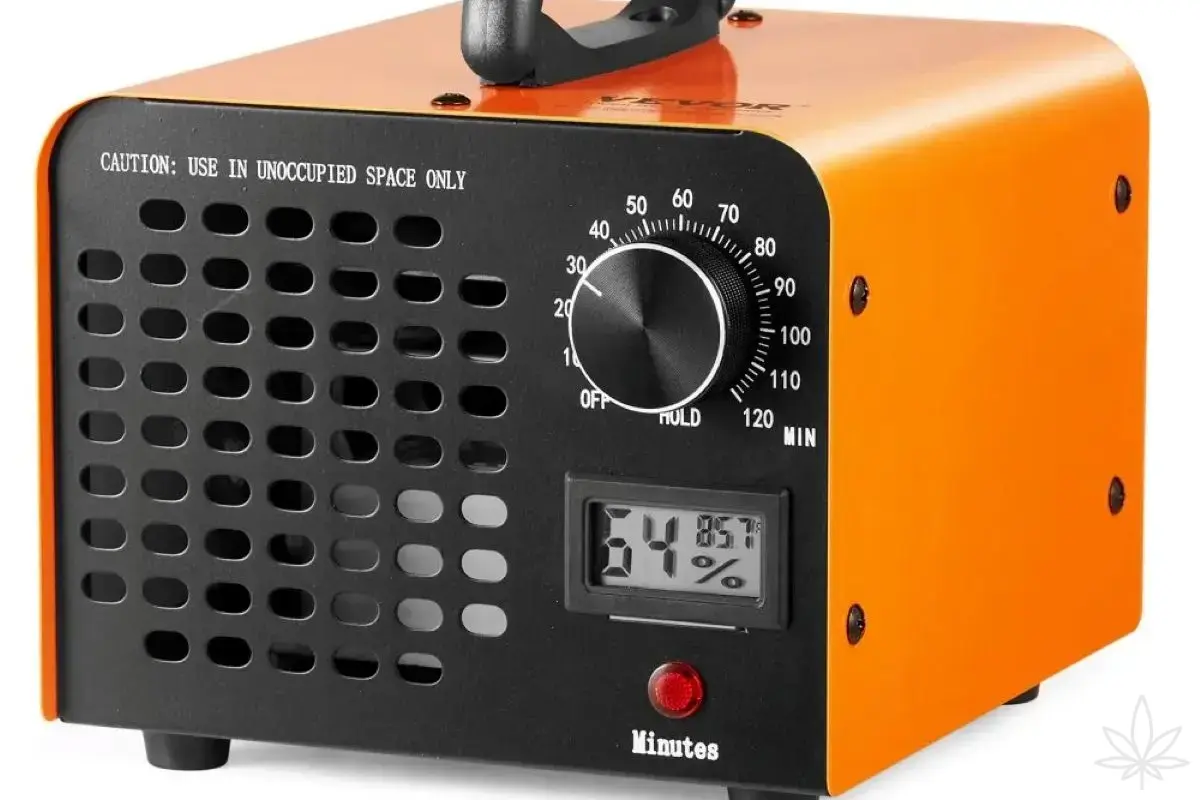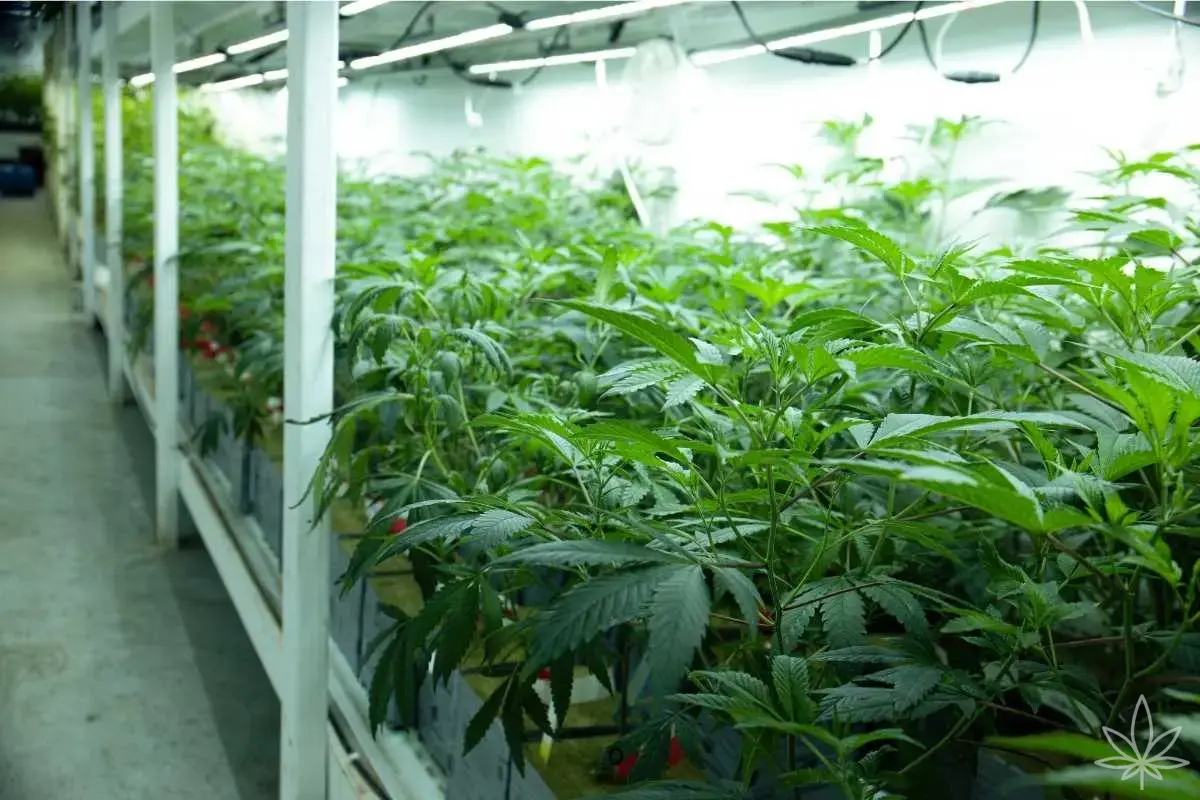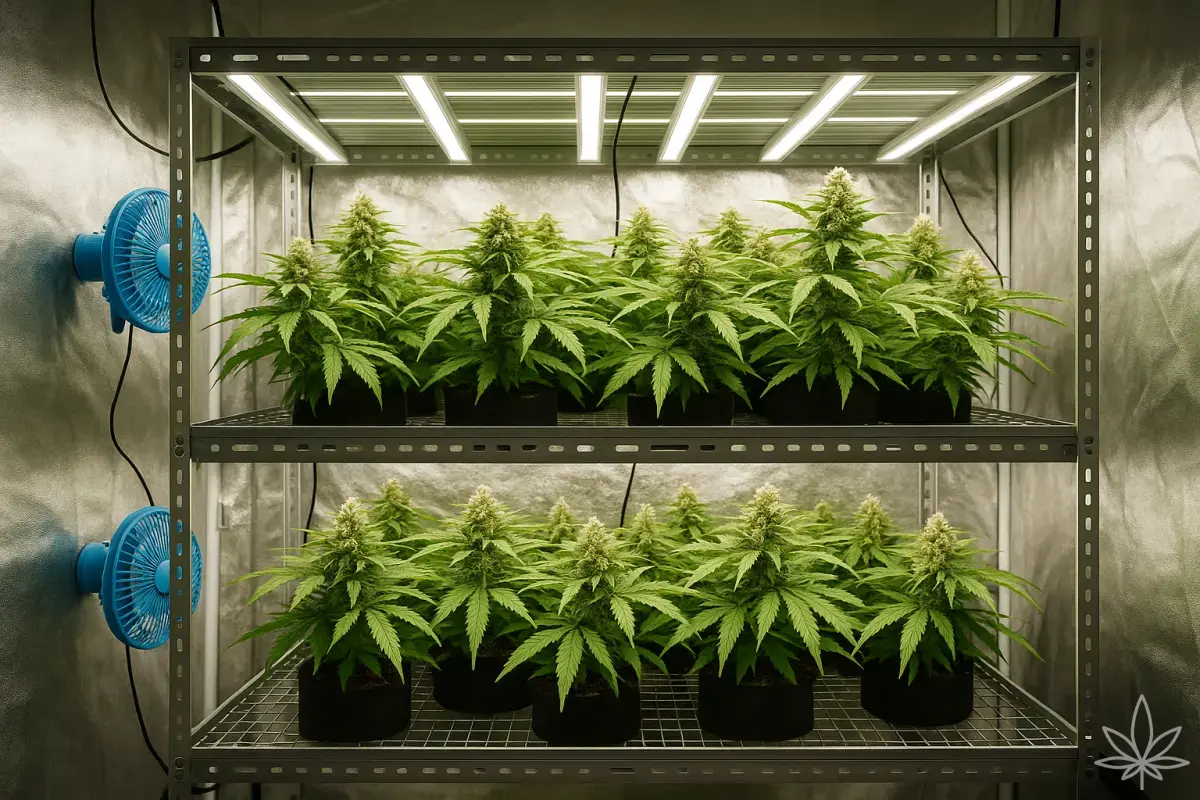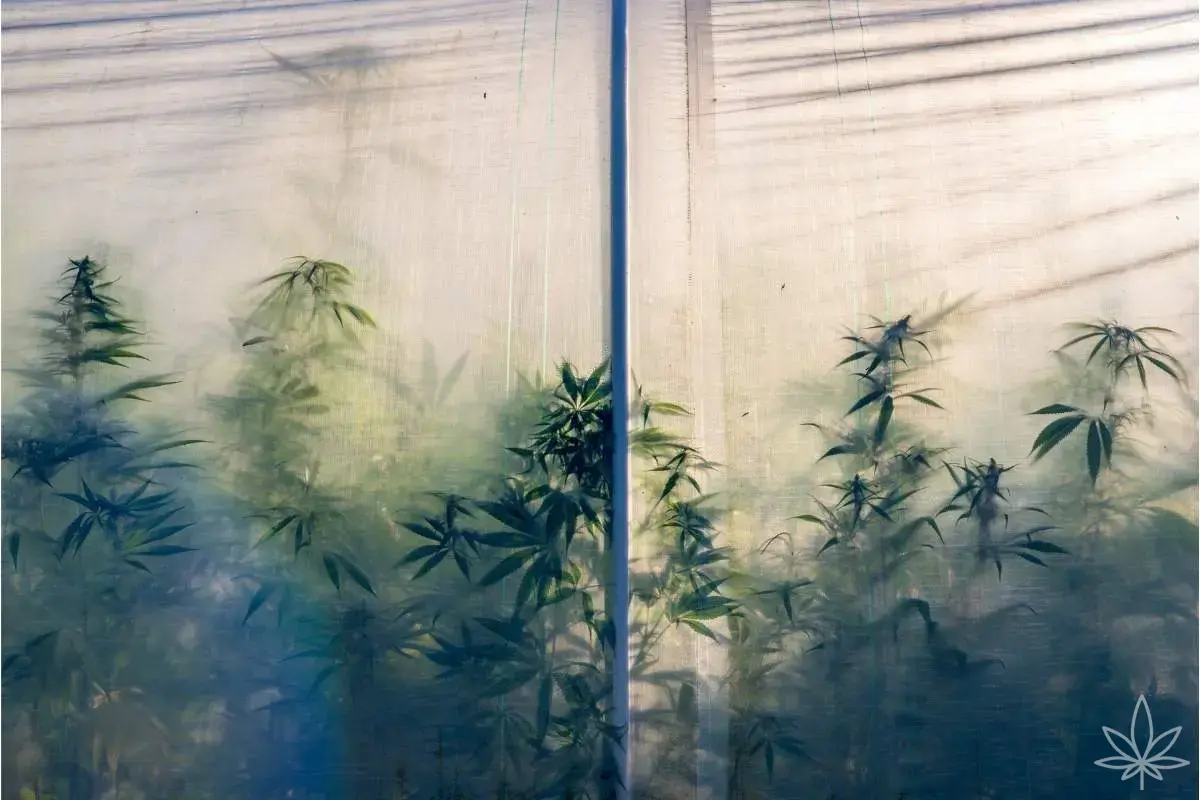Every grower eventually faces the task of telling males from females. This step is crucial: males produce pollen, females produce resinous buds. If a male pollinates your females, the plant’s energy goes into seed production instead of potent flowers.
That’s why growers want to spot males as early as possible and remove them, while also learning to identify the less common hermaphrodites.
What are pre-flowers?
Pre-flowers are the first signs of plant sex that appear before full flowering. You’ll usually see them between the 3rd and 6th week of veg, depending on the strain and conditions.
They form at the nodes (where branches meet the main stem). Careful observation of pre-flowers helps you determine sex early.
What does a female look like?
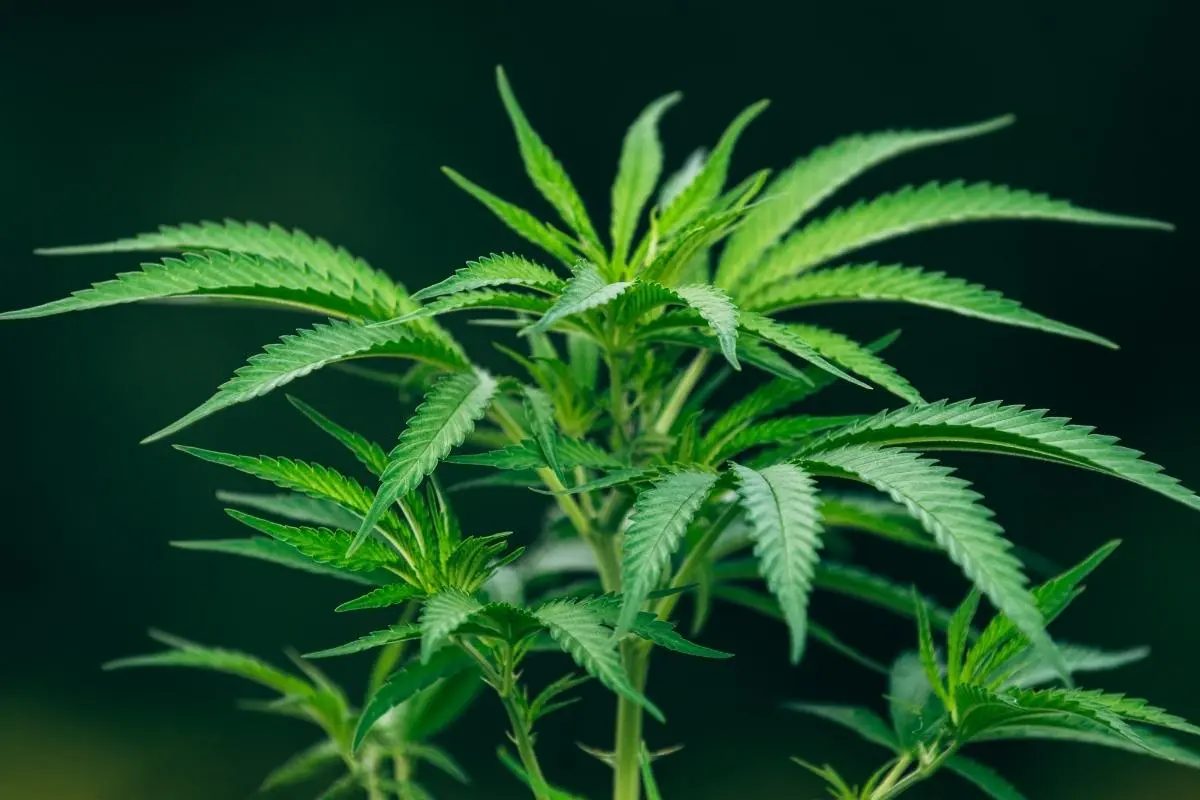
female pre-flower
Females develop small green calyxes from which thin white hairs — pistils — emerge. These are the first “hairs” you’ll notice. Over time, they elongate and change color.
Tip:
- look for white hairs emerging in pairs from a green calyx,
- the structures are small, teardrop-shaped with tiny hairs.
What does a male look like?
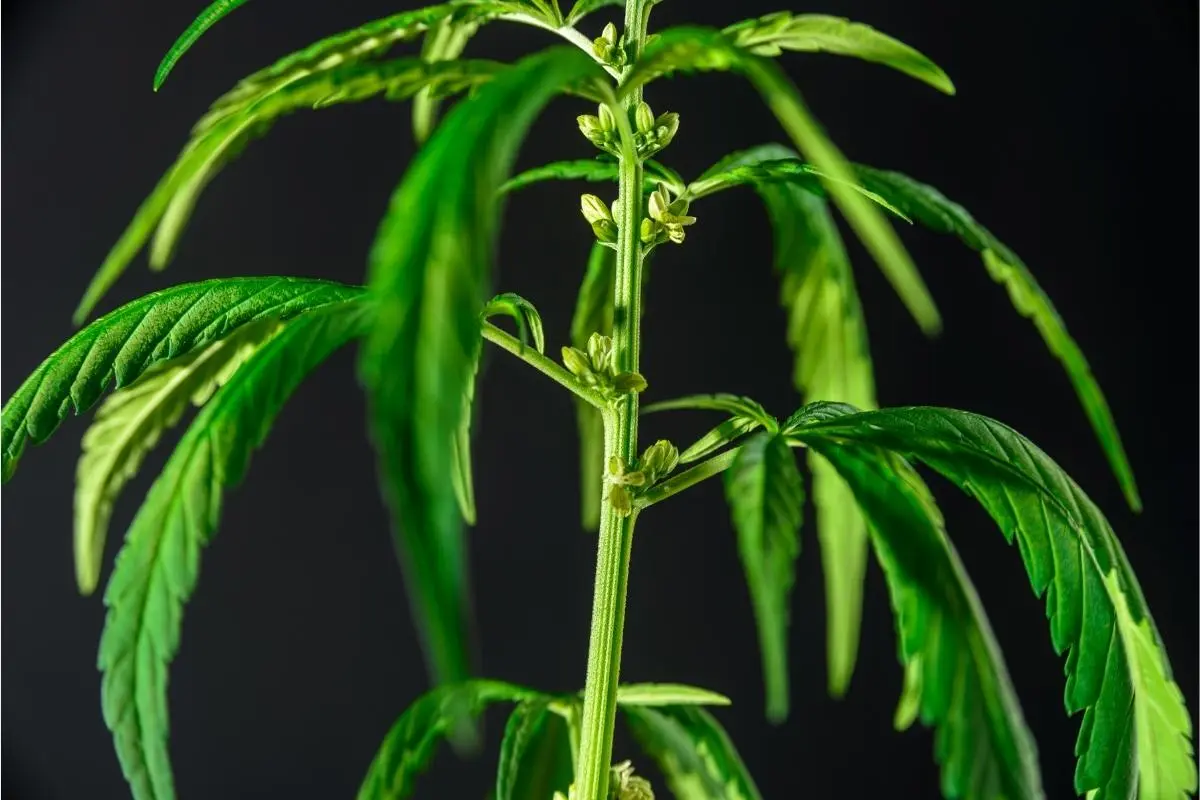
male pre-flower
Males form small, round balls — pollen sacs. At first, they appear singly, later grouping into clusters. Eventually, they open up and release pollen.
Tip:
- look for round little balls at the nodes,
- no white hairs = almost certainly a male.
How to spot a hermaphrodite?
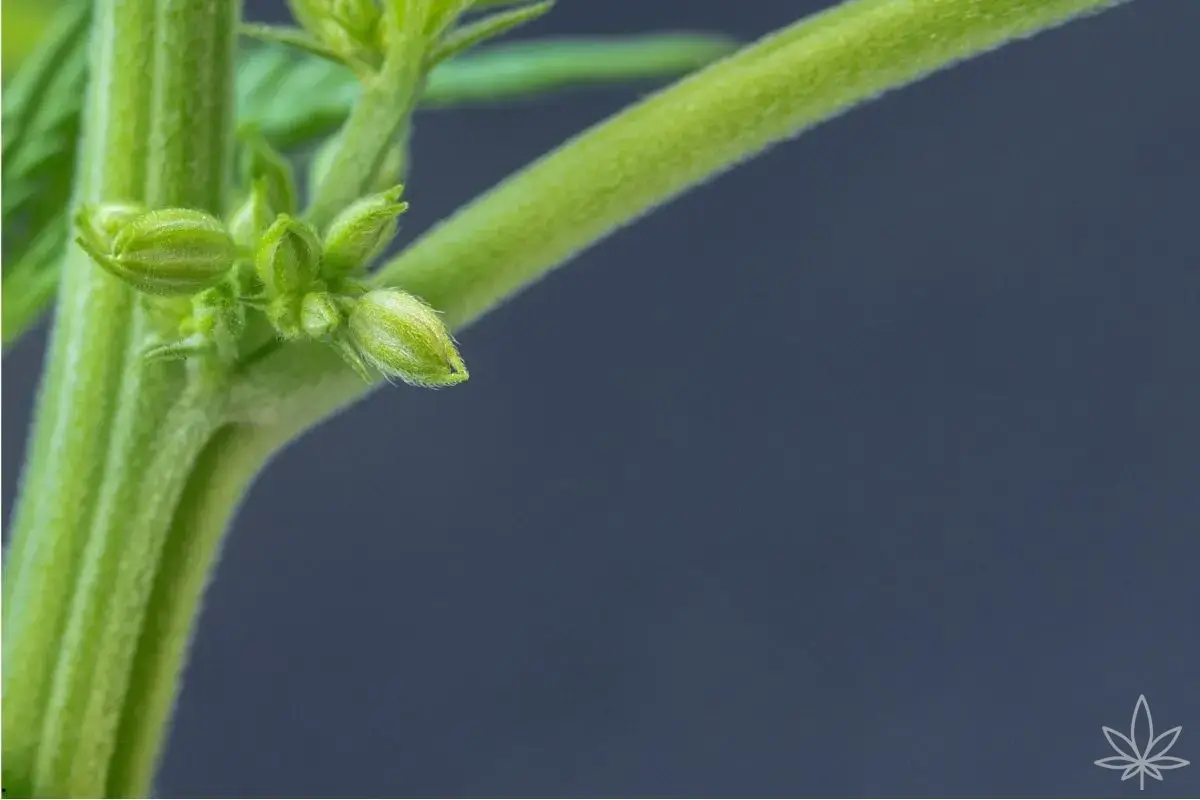
hermaphrodite pre-flower
Hermaphrodites show both male and female traits. They can grow pistils and pollen sacs side by side. It’s trickier to spot, but vital, since hermies can pollinate females and ruin your harvest.
Tip:
- inspect each node carefully,
- if you see hairs and balls together — that’s a hermaphrodite.
Common beginner mistakes
- Checking too early — young plants look similar, give them a few weeks.
- Confusing males with hermies — hermaphrodites often show later.
- Ignoring males — leaving even one can pollinate the whole crop.
Practical grower’s tips
- Use a magnifying glass or macro camera to see the details clearly.
- Check regularly — inspect plants every few days, especially between week 3 and week 6.
- Remove males and hermies immediately — don’t risk pollination.
- Train your eye — the more plants you observe, the easier it gets.
Conclusion
Identifying plant sex is one of the basics of cannabis growing. Females give you buds, males give you pollen, and hermaphrodites can cause trouble. The key is patient observation and learning the differences in pre-flowers.
With time, you’ll be able to spot subtle signs at a glance. And once you recognize your first female, the excitement is real — that’s the queen of your growroom.
FAQ – frequently asked questions
When do pre-flowers appear?
Usually between week 3 and week 6 of veg.
Can you mistake a female for a male?
At an early stage, yes — but the white hairs on females are quite distinctive.
Should hermaphrodites always be removed?
Yes — even a small amount of pollen can ruin your entire crop.
Do autoflowers show pre-flowers too?
Yes, and usually earlier than photoperiods.

